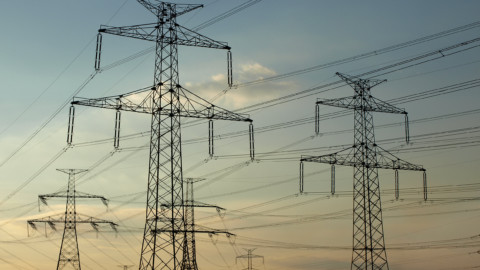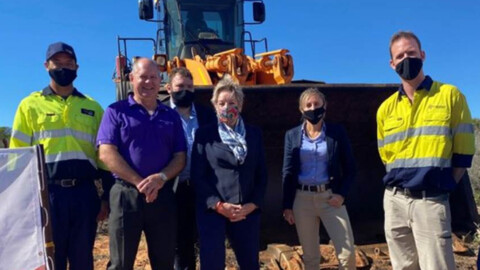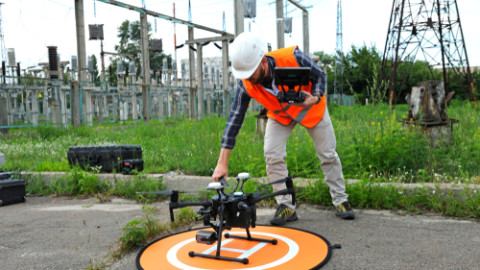A new report by Climate Energy Finance (CEF), shows that New South Wales can secure supply, put downward pressure on prices, and shut down Australia’s biggest coal power station on-time in 2025, helping to drive decarbonisation.
In order to achieve these outcomes, The Lights Will Stay on: NSW Electricity Plan 2023-2030, advises:
- Continuing the current run-rate of 1.2GW annually of New South Wales rooftop solar installations
- Front-end loading at least 1.2GW annually of utility scale wind and solar within the state to 2030
This would replace the electricity generation capacity equivalent of 2.88GW at Australia’s largest coal power station, Eraring, and the 1.32GW Vales Point coal power station, earmarked for closure in 2028-29 (when it will be an entirely end-of-life 50-51 years of age, despite recent commentary from its owners about a possible extension).
CEF’s analysis shows that there are more than enough renewable energy projects in the investor pipeline and that capital is ready and available, assuming grid connection and approvals processes can be expedited to lock in both early final investment decisions by investors and timely construction.
Delaying Eraring’s closure would require New South Wales to pay at least an estimated $200-400 million per annum in public subsidies to its operator, Canada’s Brookfield – funding which would be far better invested in accelerating the renewables build out.
Delay would also undermine both the State Government’s climate policy, and the Federal Government’s 82 per cent by 2030 renewables target and and 43 per cent emissions reduction target.
The CEF said delaying Vales Point’s closure ignores obviously increasing risks of catastrophic failure at any point in time, given it reaches the end of its 50 year lifespan in 2028-29.
The report calls on New South Wales Energy Minister, Penny Sharpe, to lift the State’s 2030 renewables target to at least 70 percent, and:
- Match the Federal Government’s program to support rooftop solar, storage and energy efficiency upgrades to 60,000 social housing homes with funding from the $1 billion NSW Energy Security Corporation, immediately alleviating energy poverty for those most vulnerable
- Accelerate the rooftop solar and batteries program rollout on 21,700 buildings across 2,200 public schools
- Move the Federal Government to lift the Small-scale Renewable Energy Scheme (SRES) cap from 100kW to 1,000kW to speed commercial and industrial installations of distributed solar (helping deliver half of new capacity needed from DER with no grid delays)
- Accelerate approvals for utility-scale renewable energy projects that must be built rapidly ahead of closures, focusing on the strategic prioritisation of plants able to gain grid connection
- Accelerate and upscale New South Wales Renewable Energy Zone (REZ) tenders and long term energy service agreements (LTESA) tenders, providing revenue certainty for private investment in new renewables
- Flood the market with an underwritten low cost $25-35/MWh electricity floor price and minimum volume offtakes for new utility solar, de-risking these projects for investors; and expedite approvals to bring them online within two to three years
- Direct Transgrid and Essential Energy to reassess its grid transmission and distribution capacity constraints, in light of PowerLink in Queensland finding that 10GW of new RE can be added even before major grid transmission projects are completed
Report author and CEF director, Tim Buckley, said New South Wales has led Australia on the development of its REZ roadmap, but grid transmission, like pumped hydro storage, is slow to get community buy-in and then be built.
“Meanwhile, the existing grid has plenty of spare capacity to accommodate within-state distributed rooftop solar and behind-the-meter storage in homes and businesses, as well as infill utility-scale wind and solar located strategically across New South Wales,” Mr Buckely said.
“There is no case to delay the planned closure of Eraring and pay operator Brookfield the estimated $200-400 million in public subsidies to do so.
“This money should be invested in New South Wales’s energy transition. We call on Energy Minister, Penny Sharpe, to take the action detailed in our report and flood the market with renewables firmed by accelerated deployment of batteries, to drive more capacity.
“This will ensure supply and reduce wholesale electricity prices, putting permanent downward pressure on energy bills whilst also better aligning our decarbonisation pathway with the climate science.
Industry response
Clean Energy Investor Group CEO, Simon Corbell, said that delaying the closure of Eraring creates significant risk for investors.
“Investors have been making decisions on new clean energy projects based upon the expected closure of Eraring in 2025, changing the date will mean investors will be less confident about future announced closures, and will have less confidence when it comes to making future investment decisions in New South Wales,” Mr Corbell said.
“We cannot afford to have less investment in new clean energy projects in New South Wales, or in Australia, at this time.”
CEO and founder of Nexa Advisory, Stephanie Bashir, said the review commissioned by the New South Wales Energy Minister will show that there are sufficient renewable energy generation and storage projects in the pipeline to replace coal-fired power stations on time.
“We now need to prioritise and accelerate the project connections and statutory approvals for already committed and anticipated generation and storage projects,” Ms Bashir said.
“This would add a further 4.3GW of firmed low carbon generation to the New South Wales power system. Our research also shows that bolstering firming auctions through the LTESA or Federal Government Capacity Investment Scheme and bringing on additional ‘insurance’ capacity earlier will be critical.”
“Taking action now would mean Eraring can still close in August 2025 as scheduled. Lack of accelerated build out of generation, storage and transmission right now has the potential to delay not only this closure, but others too. That will put power affordability, reliability and security at risk. And Australia will fail to meet its emissions targets.”
National Director of Solar Citizens, Heidi Douglas, said that instead of subsidising dirty, polluting coal power by extending the life of Eraring, New South Wales taxpayers’ money should be invested in community energy resources like support for home batteries, solar and vehicle to grid.
“The ~$300 million dollars per year to keep Eraring burning coal for our power is burning taxpayers’ money – money that would be much better spent on ways to bring our energy bills down long term and reduce our carbon emissions,” Ms Douglas said.
“By investing in home solar for all, and marrying home solar with batteries and vehicles to grid to use this sun power at night, every home becomes a power generator that can feed back into the grid and share cheap, clean power with its neighbours, bringing the cost down for all consumers.”
Executive Director of Better Renting, Joel Dignam, said the New South Wales Government should commit to co-investing with the Federal Government to support energy upgrades for social housing.
“This will help people in public and community housing to have healthier and more comfortable homes, lower power bills, and help to support the planned closure of Eraring by helping us to use energy more productively.”
















